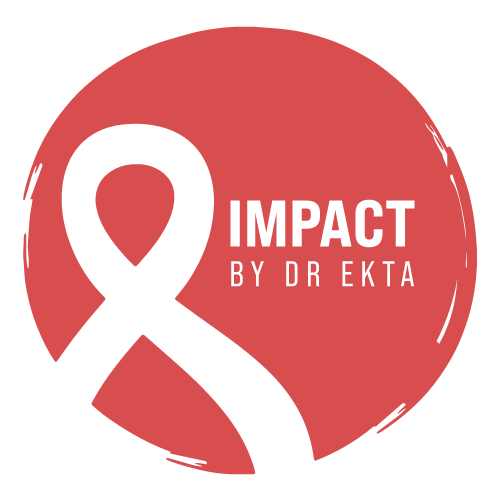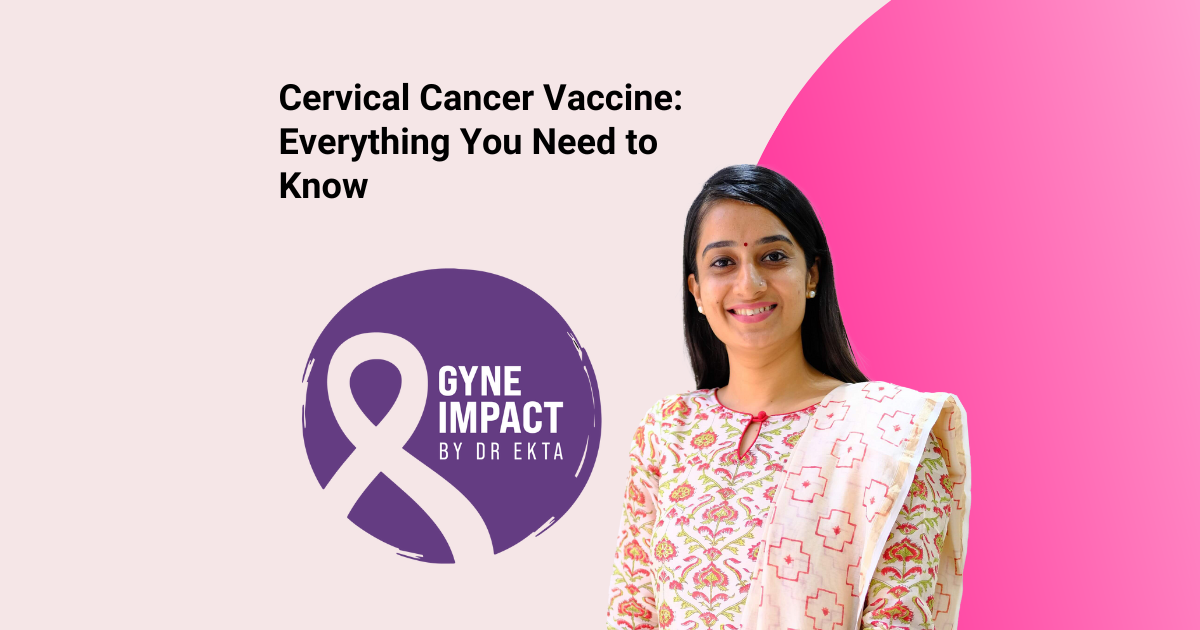As an oncologist, I have seen firsthand the devastating impact of cervical cancer on women and their families. The advent of the cervical cancer vaccine has brought a new era of hope and prevention. I am Dr. Ekta Vala, and I want to share with you everything you need to know about the cervical cancer vaccine, its importance, efficacy, safety, and the significant impact it has had globally.
Cervical cancer remains a significant health issue worldwide, particularly affecting women in low and middle-income countries. The advent of the cervical cancer vaccine has revolutionized the fight against this disease, offering hope for a future where cervical cancer can be largely prevented. This comprehensive guide will cover everything you need to know about the cervical cancer vaccine, including its importance, efficacy, safety, and the impact it has had globally.
What is Cervical Cancer?
Cervical cancer occurs in the cells of the cervix, the lower part of the uterus that connects to the vagina. It is primarily caused by persistent infection with high-risk types of the human papillomavirus (HPV). HPV is a common virus with many types, but only some types cause cervical cancer. Early-stage cervical cancer usually presents no symptoms, which is why regular screening is crucial. Symptoms of more advanced cervical cancer include vaginal bleeding, pelvic pain, and pain during intercourse.
The Role of HPV in Cervical Cancer
Human papillomavirus (HPV) is the most significant risk factor for cervical cancer. Nearly all cases of cervical cancer can be attributed to HPV infection. There are over 100 types of HPV, but HPV types 16 and 18 are responsible for approximately 70% of cervical cancer cases. The virus is transmitted through intimate skin-to-skin contact, often during sexual activity. While most HPV infections resolve on their own, persistent infection with high-risk HPV types can lead to cervical cancer.
What is the Cervical Cancer Vaccine?
The cervical cancer vaccine, also known as the HPV vaccine, is designed to protect against the types of HPV that most commonly cause cervical cancer. There are three main types of cervical cancer vaccines:
- Gardasil: Protects against HPV types 6, 11, 16, and 18.
- Gardasil 9: Covers the same HPV types as Gardasil plus five additional high-risk types (31, 33, 45, 52, and 58).
- Cervarix: Protects against HPV types 16 and 18.
How Does the Cervical Cancer Vaccine Work?
The cervical cancer vaccine works by stimulating the body’s immune system to produce antibodies that target HPV. When vaccinated individuals are exposed to HPV in the future, their immune system can recognize and fight off the virus before it can cause an infection. This preemptive action significantly reduces the risk of developing cervical cancer.
Efficacy of the Cervical Cancer Vaccine
The cervical cancer vaccine has shown remarkable efficacy in clinical trials and real-world studies. When administered before exposure to HPV (typically before the onset of sexual activity), the vaccine can prevent almost 100% of diseases caused by the HPV types it targets. For instance, Gardasil and Gardasil 9 are nearly 100% effective in preventing precancerous cervical lesions caused by HPV types 16 and 18.
Safety of the Cervical Cancer Vaccine
The cervical cancer vaccine is safe and well-tolerated. Millions of doses have been administered worldwide, and extensive studies have confirmed its safety profile. Common side effects are usually mild and include pain at the injection site, fever, dizziness, and nausea. Serious side effects are extremely rare. Health authorities, including the World Health Organization (WHO) and the Centers for Disease Control and Prevention (CDC), endorse the vaccine’s safety and effectiveness.
Who Should Get the Cervical Cancer Vaccine?
The cervical cancer vaccine is recommended for:
- Girls and Boys Aged 11-12: The CDC recommends routine vaccination for boys and girls at ages 11 or 12. Vaccination can start as early as age 9.
- Catch-up Vaccination: For females up to age 26 and males up to age 21 who did not receive the vaccine when they were younger.
- Certain Populations: Males aged 22-26 who have sex with men or have compromised immune systems, including HIV infection, should also receive the vaccine.
Administration of the Cervical Cancer Vaccine
The cervical cancer vaccine is typically administered in a series of shots:
- Two-dose Schedule: For those who start the series before their 15th birthday, the second dose is given 6-12 months after the first.
- Three-dose Schedule: For those who start the series on or after their 15th birthday, the second dose is given 1-2 months after the first, and the third dose is given 6 months after the first dose.
Impact of the Cervical Cancer Vaccine
The introduction of the cervical cancer vaccine has had a profound impact on public health. In countries with high vaccination coverage, there has been a significant decline in HPV infections, genital warts, and cervical precancers. For example, in Australia, one of the first countries to implement a national HPV vaccination program, there has been a dramatic reduction in cervical cancer rates among vaccinated women.
Global Efforts and Challenges
Global efforts to increase the uptake of the cervical cancer vaccine are ongoing. The WHO has set a target to vaccinate 90% of girls by age 15 by 2030 as part of its strategy to eliminate cervical cancer as a public health problem. However, challenges remain, particularly in low and middle-income countries where vaccine access and affordability can be barriers. Efforts to overcome these challenges include international partnerships, subsidies, and educational campaigns to raise awareness about the vaccine’s benefits.
Myths and Misconceptions
Despite its proven benefits, the cervical cancer vaccine faces several myths and misconceptions:
- Myth 1: The vaccine promotes promiscuity. Research shows no link between receiving the vaccine and increased sexual activity.
- Myth 2: The vaccine is only for girls. The vaccine is important for boys too, as it prevents HPV-related cancers in men and reduces transmission of the virus.
- Myth 3: The vaccine is unsafe. The cervical cancer vaccine has a strong safety record supported by numerous studies and health organizations.
Future Directions
Research continues to improve the cervical cancer vaccine. New developments may include vaccines that protect against more HPV types or require fewer doses. Additionally, efforts to increase vaccination rates and global access are critical to maximizing the public health benefits of the vaccine.
Conclusion
In summary, the cervical cancer vaccine is a crucial tool in the fight against cervical cancer. Its efficacy in preventing HPV infections and related cancers is well-documented, and its safety profile is robust. By vaccinating both girls and boys, we can significantly reduce the prevalence of HPV and move closer to eradicating cervical cancer. Embracing the cervical cancer vaccine and spreading awareness about its benefits is essential for public health and the well-being of future generations.
Get the HPV Vaccine at a discounted price of Rs. 1800 at our hospital, If you haven’t already been vaccinated against HPV yet. Together, we can work towards a future free from the burden of HPV-related diseases and ensure a healthier tomorrow for generations to come.

